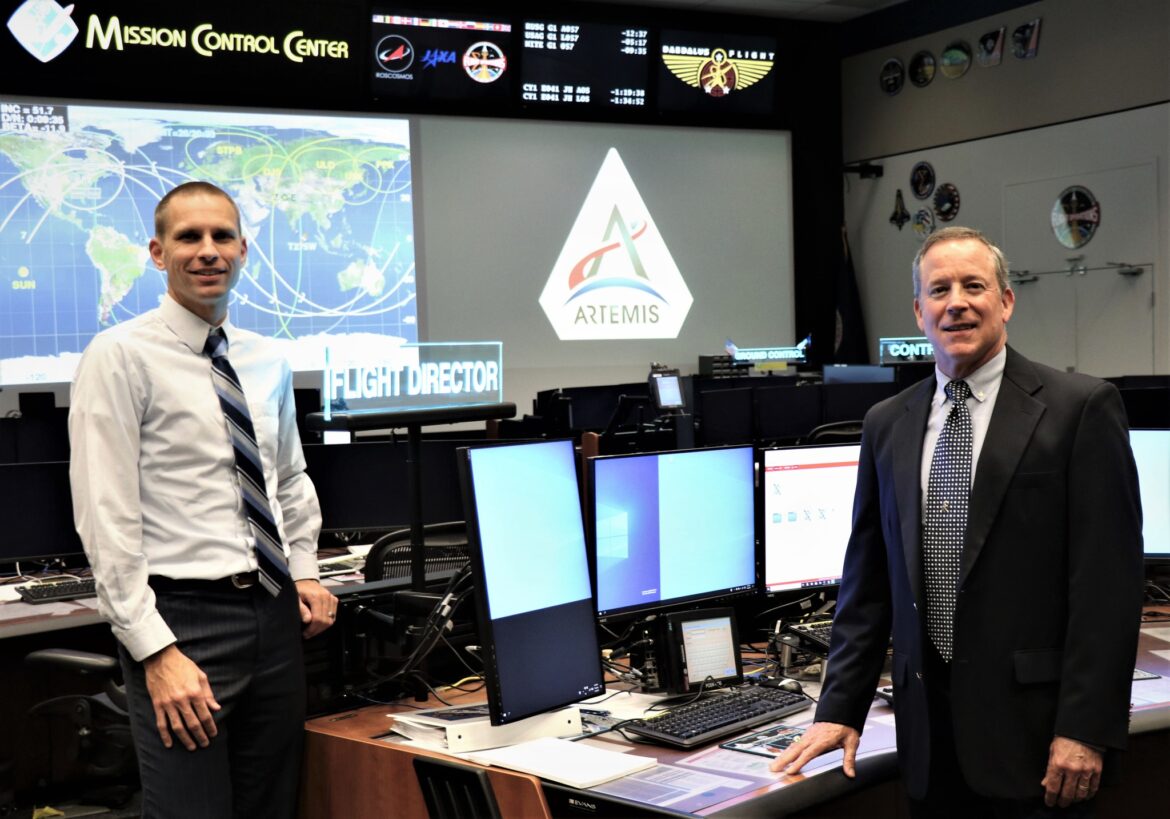By Richard Tew/ NASA/JSC Correspondent for The Post Newspaper
Directing missions and controlling projects in space, flight directors and flight controllers at the Johnson Space Center spend their days contributing to the success of NASA’s many space exploration programs.
Astronauts are often the public face of NASA, but behind each mission, supporting each astronaut, are a team of flight directors and flight controllers who ensure a safe, productive mission.
JSC Flight Director Rick LaBrode said it was a chance meeting with a hiring manager of an aerospace contractor at a party which led him to JSC.
Originally, LaBrode’s mom was going to the party but didn’t feel well. His father then asked him if he wanted to take her place. Having no other plans, he accepted.
While at the party, LaBrode had a fortuitous meeting with the hiring manager of a NASA contractor. Both discussed LaBrode’s college pursuits in Electrical Engineering.
The manager encouraged him to reach out after graduation to see about working for him.
“A month later he calls me up and says ‘Hey, do you want a summer job?” said LaBrode. “I thought he was just being a nice guy. That got me in the door here at JSC in Mission Control.”
Having to take nine hours of college during the summer, LaBrode couldn’t accept the offer at the time. He says the next spring he found himself interviewing with the contractor and was hired shortly after.
Reflecting on the chance meeting, LaBrode says it led him to JSC where he would eventually become a flight controller for the space shuttle program.
His first assignment was working as an Instrumentation and Communications Officer (INCO).
Halfway through construction on the ISS, LaBrode says he was trained and certified as a flight director for space shuttle missions.
LaBrode started his flight director career just before the International Space Station (ISS) was about to start. This led to the opportunity to be lead flight director over a shuttle mission before the shuttle program was retired in 2011.
Approaching 38-years-of-service at JSC, LaBrode’s experiences with the shuttle program and the ISS would set him up to later become the lead flight director of NASA’s recent Artemis 1 mission.
The Artemis program is NASA’s collective effort to return humans to the surface of the Moon and beyond.
Progressing from a flight controller to flight director isn’t easy, says LaBrode.
“To become a flight director you have proven your ability to become a specialist in any particular system,” said LaBrode. “In order to get to the front room, you have to prove your expertise, your ability to be a specialist at a particular system.”
Hailing from Minnesota, Artemis 1 Flight Controller Jon Pohlkamp knew from a young age he wanted to work at NASA one day.
“I always loved space as a kid,” said Pohlkamp.
Pohlkamp made his dream a reality earning an Aerospace Engineering Degree which would later help him land a flight controller position at JSC.
“It was one of those things where everything just kind of lined up,” said Pohlkamp.
Pohlkamp’s first job at JSC was as a flight controller working with Data Processing Systems (DPS) under the space shuttle program just over 15 years ago. As the shuttle program drew to a close and the space program morphed into the Artemis program, Pohlkamp progressed along with it. He now works as a flight controller with Command and Data-handling systems.
Pohlkamp says often times, the journey to becoming a flight controller starts in “back rooms” known as “Multi-Purpose Staff Rooms” (MPSR’s), where flight controllers in the MPSR rooms work to support flight controllers and flight directors in the main Flight Control Rooms (FCRs).
According to Pohlkamp, certifications for flight controllers and directors are rigorous and include exams—both written and oral—along with live simulation exams.
“That’s where you learn all the technical information about the system. You learn how it works and how to communicate on loops; all those fundamentals you are using,” said Pohlkamp.
PohlKamp says being able to communicate with other controllers and directors and manage teams is key.
“You may not have all of the answers. Someone on your team may have the expertise,” said Pohlcamp.
Both Labrode and Pohlkamp describe their first time working in a Flight Control Room within the Mission Control Building as awe-inspiring. LaBrode refers to it as “Hallowed ground.”
“As a young boy, I can remember seeing images from mission control and all the spectacular things they did,” said LaBrode. “So I walk in the door and it just hits you. The emotion is pretty much indescribable.”
Pohlkamp echoed that sentiment.
“It’s kind of overwhelming,” said Pohlcamp, “This is kind of our cathedral for spaceflight. It’s hard to express it because this is what we have worked our whole lives for.”
Both LaBrode and Pohlkamp say they look forward to their roles at JSC in future missions, and see history being made as the Artemis program sets its sights on further exploration to Earth’s closest celestial bodies.
“When you come to see this job, exploration and all that, and just kind of seeing how far we are going to get, getting back to the Moon. Just seeing those photos coming from the back side of the Moon, when you’ve got Earth in the distance and the Moon up close, it’s pretty cool to see and it’s really, really exciting,” said Pohlkamp. “Seeing us on the Moon again and how far out are we going to get, yeah, I’m really looking forward to that.”
When he’s not writing about NASA/JSC, Richard Tew teaches Irish dance to students from three years old to adults in Clear Lake. Learn more at http://www.tew-academy.org.

